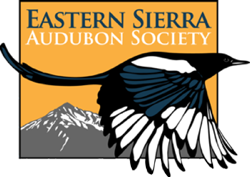East Mojave Peaks Important Bird Area
Text and photos from National Audubon Society IBA Database Site Profile
East Mojave Peaks Site Description
The extreme eastern Mojave Desert features three large mountain ranges whose unique natural habitats warrant their recognition as an IBA: the Kingston, Clark and New York ranges. Visible from I-15 just inside the border of Nevada, each supports large tracts of Joshua Tree woodland on lower slopes, grading into Pinyon-Juniper woodland and a floristically diverse desert chaparral, and finally into tiny groves of White Fir above 7000' on their peaks. Unique in California, these sky islands of forest separated by vast deserts are miniature versions of their larger counterparts in southern Nevada (e.g. Spring Mtns.) and Arizona, with which they share several species. The habitat within the Kingstons is entirely protected as a BLM wilderness area, and the New Yorks are located within the Mojave National Preserve. About of Clark Mountain is protected by the Mojave National Preserve, with the exception of the southeast corner just north of Mountain Pass, which was left outside the preserve boundary for a mining operation. These mountains have been the subject of long-term studies in biogeography since the early 1900s, and continue to captivate ornithologists (see Cardiff and Remsen 1981).
Conservation Issues
Owing to its remoteness, much of the habitat within this IBA is secure. However, massive new mining operations at Clark Mountain should be closely watched.
Ornithological Summary
The relatively lush Joshua Tree woodland on the lower slopes of these peaks support strong populations of desert birds, notably Bendire's Thrasher, Juniper Titmouse, Scott's Oriole, and, in the New Yorks, Gilded Flicker. Broad-tailed Hummingbird, Plumbeous Vireo and Virginia's Warbler are common in pinyon-rich chaparral on Clark Mountain, and wherever this habitat occurs on steep-sloped canyons, Gray Vireo breed in what is likely their largest population away from eastern San Diego County. The most unusual bird communities, however, are restricted to the tops of these peaks, occurring most consistently in the fir grove on Clark Mountain. Hepatic Tanager and Whip-poor-will (arizonae race) virtually unknown elsewhere in California, are regular nesters on Clark (and at least the former in the New Yorks as well), and joined by occasional strays from Arizona, including Painted Redstart, Red-faced Warbler, and Grace's Warbler.
Help us learn more about the birds at this IBA! Enter your birding data online at California eBird! (http://ebird.org/california/)
Click here for a bar chart of eBird observations in the East Mojave Peaks area


